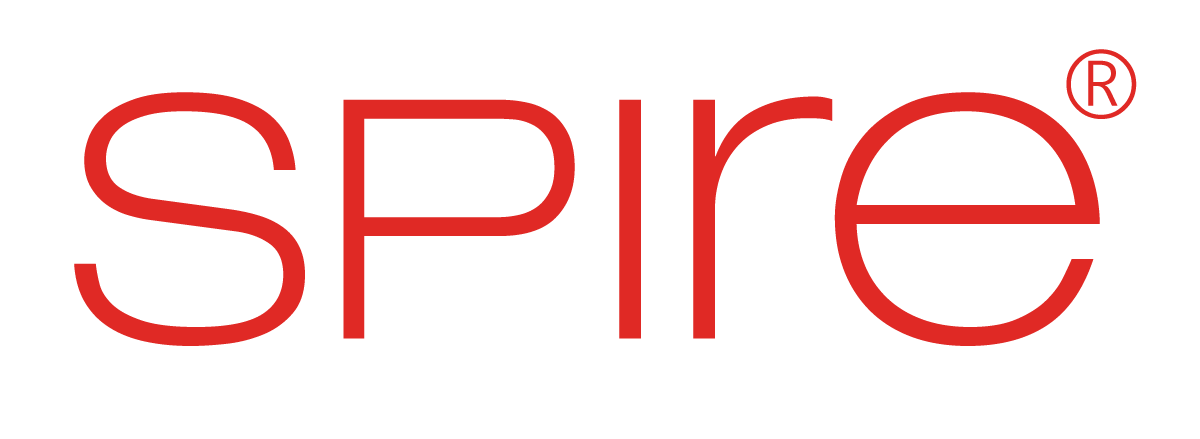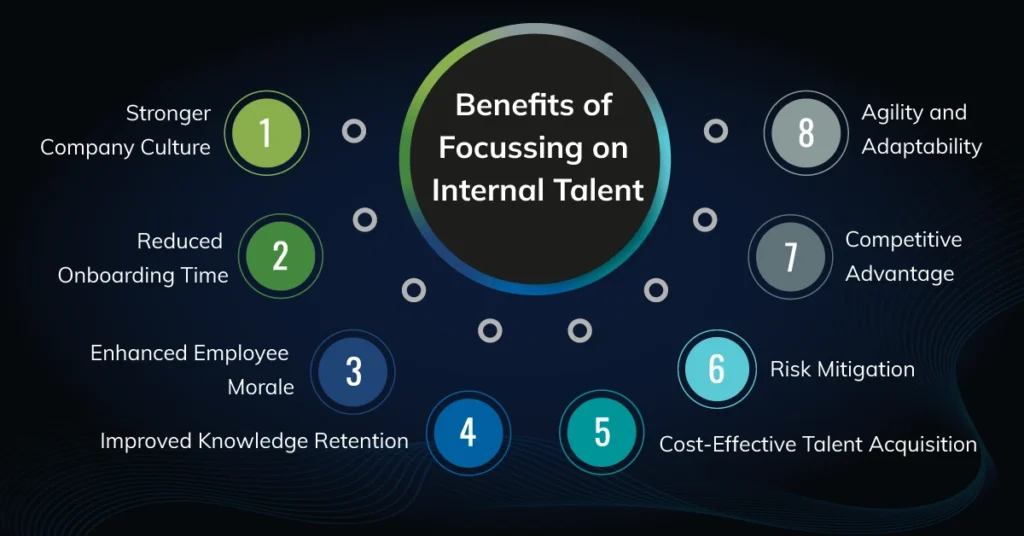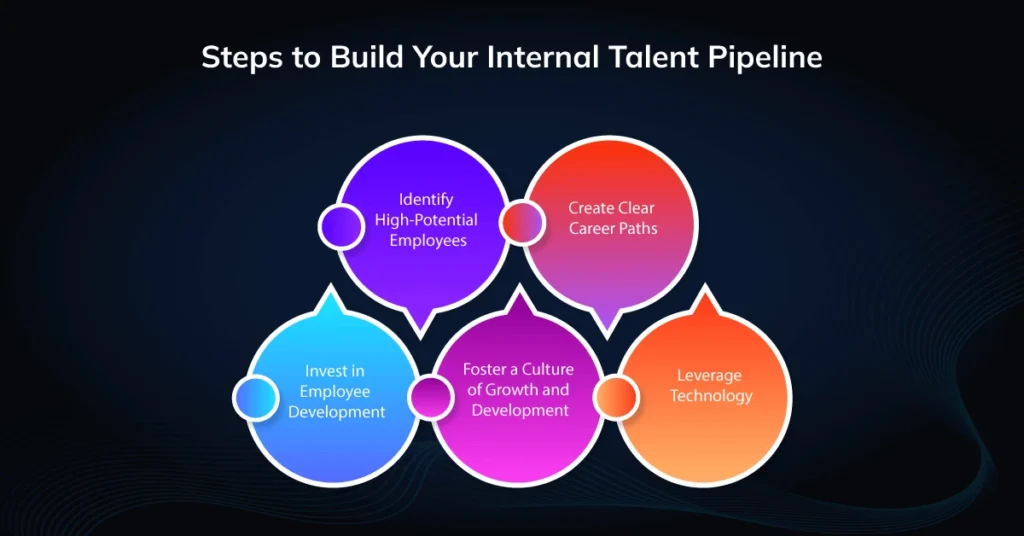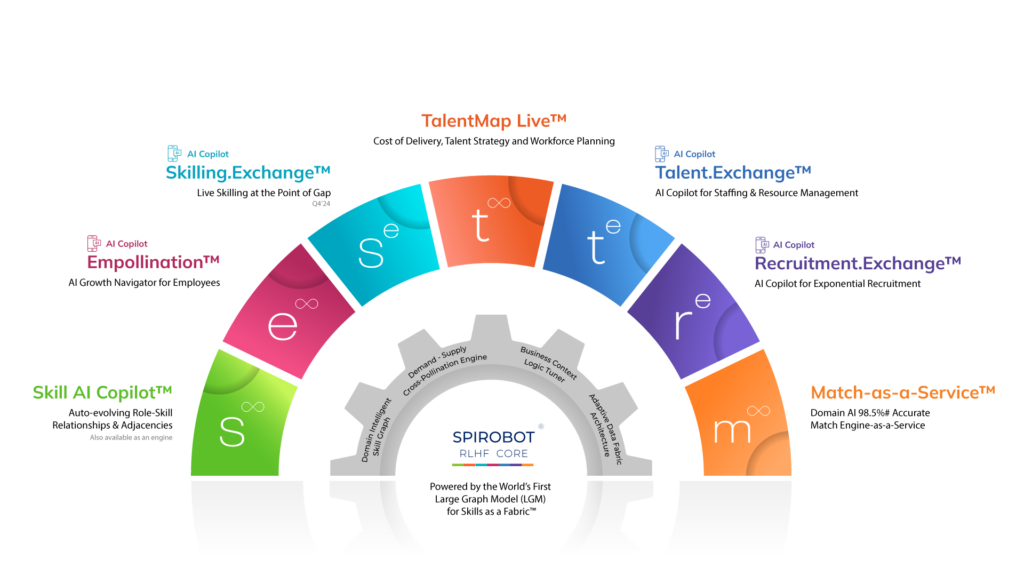In today’s dynamic business environment, retaining and developing top talent is crucial for organizational success. Building a strong internal talent pipeline allows you to leverage the skills and experience of your existing workforce, fostering a culture of growth and boosting employee engagement. This strategic approach ensures you have a readily available pool of qualified candidates to fill future vacancies, minimizing external recruiting costs and delays.
This blog post outlines key steps organizations can take to identify, develop, and retain internal talent, creating a robust pipeline that fuels your competitive edge.
Understanding Internal Talent Pipelines
An internal talent pipeline is a strategic approach to identifying, developing, and retaining high-potential employees within your organization. It involves cultivating a pool of qualified candidates ready to fill critical roles as they become available. Organizations can build a strong foundation for future growth and success by focusing on internal talent.
An internal talent pipeline is a strategic approach to identifying, developing, and retaining high-potential employees within your organization.
It involves cultivating a pool of qualified candidates ready to fill critical roles as they become available.
Key components of an effective internal talent pipeline include:
- Talent Identification: Pinpointing employees with high potential and the drive to advance within the organization. This involves using performance data, assessments, and employee feedback to identify top performers and those with leadership qualities.
- Skill Assessment: Evaluating the current skill set of employees to identify gaps and areas for development. This information is crucial for creating targeted development plans.
- Career Path Development: Creating clear career paths that outline employees’ steps to progress within the organization. This provides employees with a roadmap for their career growth and helps them align their goals with the company’s objectives.
- Succession Planning: Identifying critical roles within the organization and developing plans to ensure a smooth leadership transition when key positions become vacant. This involves identifying potential successors and providing them with the necessary development opportunities.
- Performance Management: Implement a robust performance management system to provide regular feedback, set clear expectations, and identify development needs. This will help employees understand their strengths and weaknesses and provide a framework for growth.
Components of an effective internal talent pipeline:
– Talent Identification
– Skill Assessment
– Career Path Development
– Succession Planning
– Performance Management
Investing in developing internal talent can create a high-performing workforce, reduce turnover, and enhance overall organizational performance.
Why Focus on Internal Talent?
Investing in internal talent offers numerous advantages for organizations seeking sustained growth and success:
- Stronger Company Culture: Employees promoted from within are deeply ingrained in the company culture, ensuring its preservation and evolution.
- Reduced Onboarding Time: Internal hires are already familiar with company processes, systems, and values, leading to faster integration and productivity.
- Enhanced Employee Morale: Prioritizing internal promotions fosters a sense of loyalty, job satisfaction, and increased employee engagement.
- Improved Knowledge Retention: Promoting from within safeguards valuable institutional knowledge and expertise.
- Cost-Effective Talent Acquisition: Developing internal talent is often more cost-effective than external recruitment, as it eliminates recruitment fees, onboarding expenses, and potential training costs.
- Risk Mitigation: Relying on internal candidates reduces the risk of hiring misfits or individuals who may not align with the company culture.
- Competitive Advantage: A strong internal talent pipeline can differentiate your organization as an employer of choice, attracting top talent externally while retaining high-performing employees.
- Agility and Adaptability: A skilled and versatile workforce developed through internal talent initiatives can respond more effectively to market changes and challenges.
Organizations can create a high-performing workforce that drives innovation, improves efficiency, and contributes to overall business success by prioritizing internal talent development.
Building Your Internal Talent Pipeline
Building a robust internal talent pipeline requires a strategic and proactive approach. Here’s how you can nurture and develop your employees for future leadership roles:
Identify High-Potential Employees
- Talent Assessments: Conduct regular assessments to identify employees with high potential, focusing on their skills, knowledge, and leadership abilities.
- Performance Reviews: Utilize performance reviews to pinpoint top performers and those with high growth potential.
- Employee Surveys: Gather feedback on employee aspirations, career goals, and development needs.
Create Clear Career Paths
- Role Mapping: Define clear career paths for different organizational roles, outlining the necessary skills and experiences at each level.
- Succession Planning: Identify critical positions and develop succession plans for a smooth leadership transition.
- Individual Development Plans (IDPs): Collaborate with employees to create personalized development plans aligned with their career goals and the organization’s needs.
Invest in Employee Development
- Comprehensive Training Programs: Offer various training options, including leadership development, technical skills training, and soft skills development.
- Mentorship and Coaching: Pair high-potential employees with experienced mentors or coaches to provide guidance and support.
- Stretch Assignments: Assign challenging projects to help employees develop new skills and expand their capabilities.
- Job Rotations: Create opportunities for employees to gain exposure to different departments and roles, broadening their perspectives.
Foster a Culture of Growth and Development
- Open Communication: Encourage open dialogue about career aspirations and development opportunities.
- Employee Recognition: Celebrate employee achievements and milestones to boost morale and motivation.
- Flexible Work Arrangements: Offer flexible work options to improve work-life balance and attract top talent.
- Employee Resource Groups (ERGs): Support ERGs to foster a sense of belonging and provide networking opportunities.
Leverage Technology
- Talent Management Systems: Utilize technology to track employee performance, skills, and development progress.
- Learning Management Systems (LMS): Provide easy access to training resources and track employee learning outcomes.
- Performance Management Tools: Use data-driven insights to identify development needs and measure the effectiveness of development programs.
By implementing these strategies and fostering a culture of growth, you can build a strong internal talent pipeline that positions your organization for long-term success.
Spire.AI Can Help Build Your Internal Talent Pipeline
Spire.AI offers a suite of AI-powered tools to significantly enhance your efforts to build a strong internal talent pipeline.
- Auto-evolving Role-Skill Framework: This LGM-based framework uses AI to identify complex skill mixes and skill requirements for every role in your organization. It provides a single source of truth for skills and role data, ensuring consistency and scalability for talent development programs.
- Talent Management for Skills-Based Organizations: Spire.AI uses AI to aggregate and understand unstructured data from various employee skill data sources. It builds AI-generated skill profiles for about 83% of the employee base with minimum inputs like job titles.
- Career Path Simulation and Reskilling Recommendations: Spire.AI helps employees receive precise recommendations to upskill, reskill, and grow laterally or vertically based on their aspirations and immediate growth opportunities available in the company. Organizations can define future, growth-based roles, and job pipelines, enabling strategic talent planning.
- Talent Marketplace: Spire.AI’s Talent Marketplace empowers employees with an unbiased and democratized environment for internal mobility, work opportunities, and growth while ensuring governance with Business Context Logic (BCL). This platform can significantly increase internal mobility, fostering a culture of growth and development within your organization.
By leveraging Spire.AI’s solutions, organizations can streamline their internal talent pipeline processes, make data-driven decisions, and enhance their ability to identify, develop, and retain top talent.
Conclusion
Building a strong internal talent pipeline is a strategic investment that significantly benefits your organization. By identifying, developing, and retaining top talent within your ranks, you can reduce recruitment costs, improve employee engagement, and foster a culture of continuous learning.
Following the steps outlined in this blog post and utilizing innovative tools like Spire.AI, you can create a sustainable internal talent pipeline that will support your long-term growth and success.








